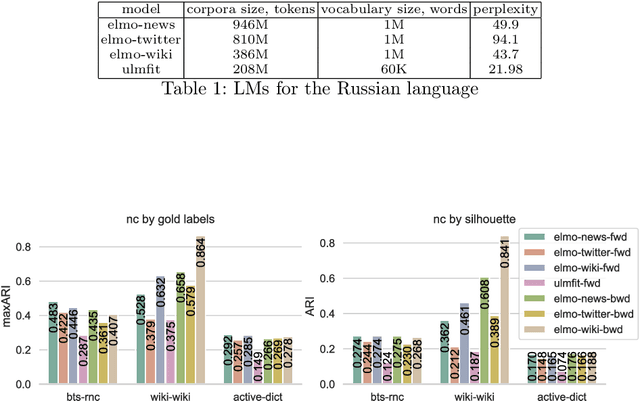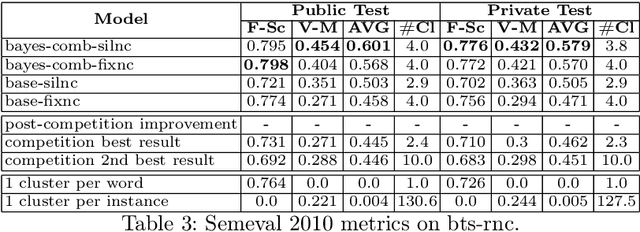Combining Neural Language Models for WordSense Induction
Paper and Code
Jun 23, 2020



Word sense induction (WSI) is the problem of grouping occurrences of an ambiguous word according to the expressed sense of this word. Recently a new approach to this task was proposed, which generates possible substitutes for the ambiguous word in a particular context using neural language models, and then clusters sparse bag-of-words vectors built from these substitutes. In this work, we apply this approach to the Russian language and improve it in two ways. First, we propose methods of combining left and right contexts, resulting in better substitutes generated. Second, instead of fixed number of clusters for all ambiguous words we propose a technique for selecting individual number of clusters for each word. Our approach established new state-of-the-art level, improving current best results of WSI for the Russian language on two RUSSE 2018 datasets by a large margin.
 Add to Chrome
Add to Chrome Add to Firefox
Add to Firefox Add to Edge
Add to Edge